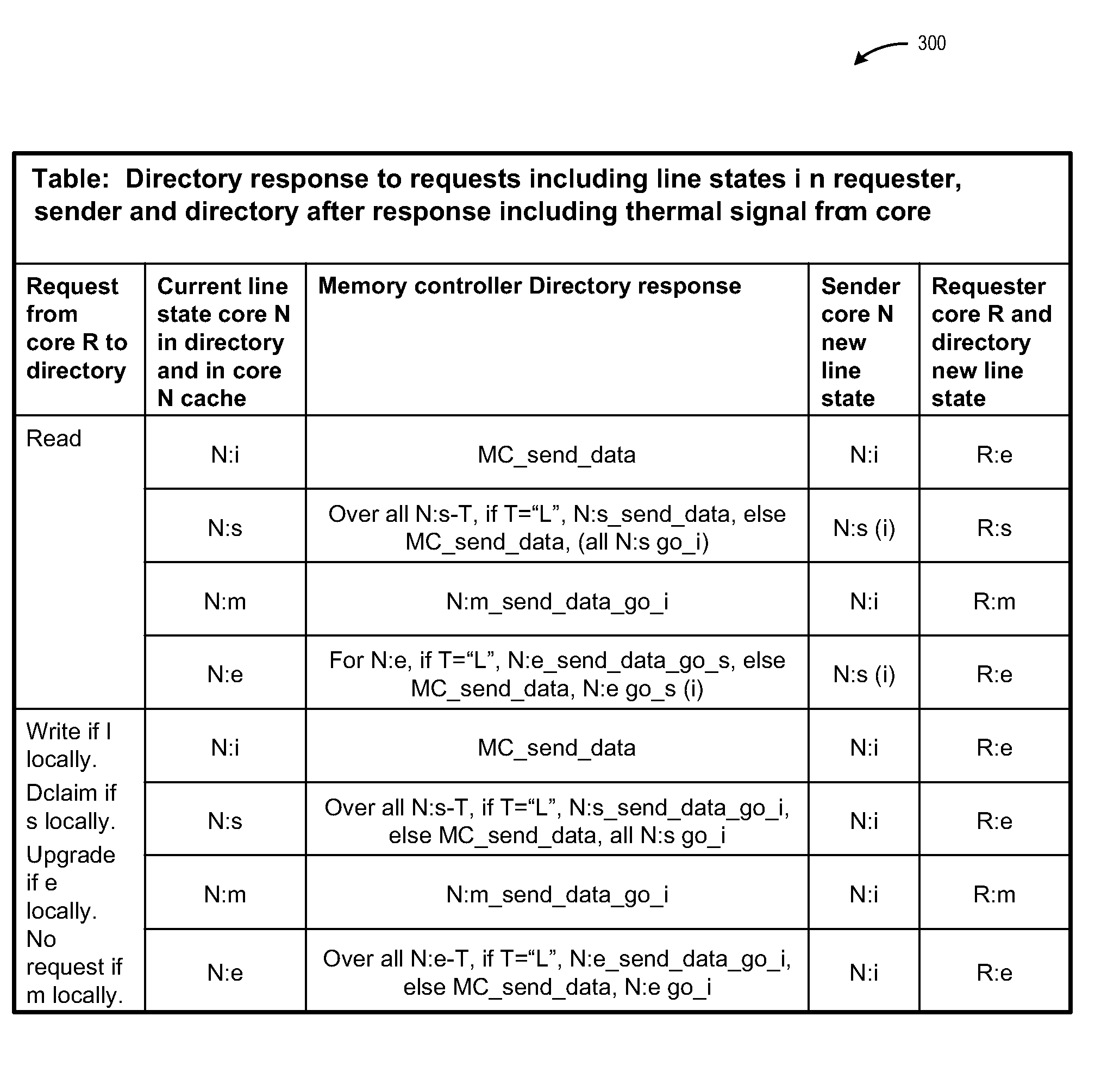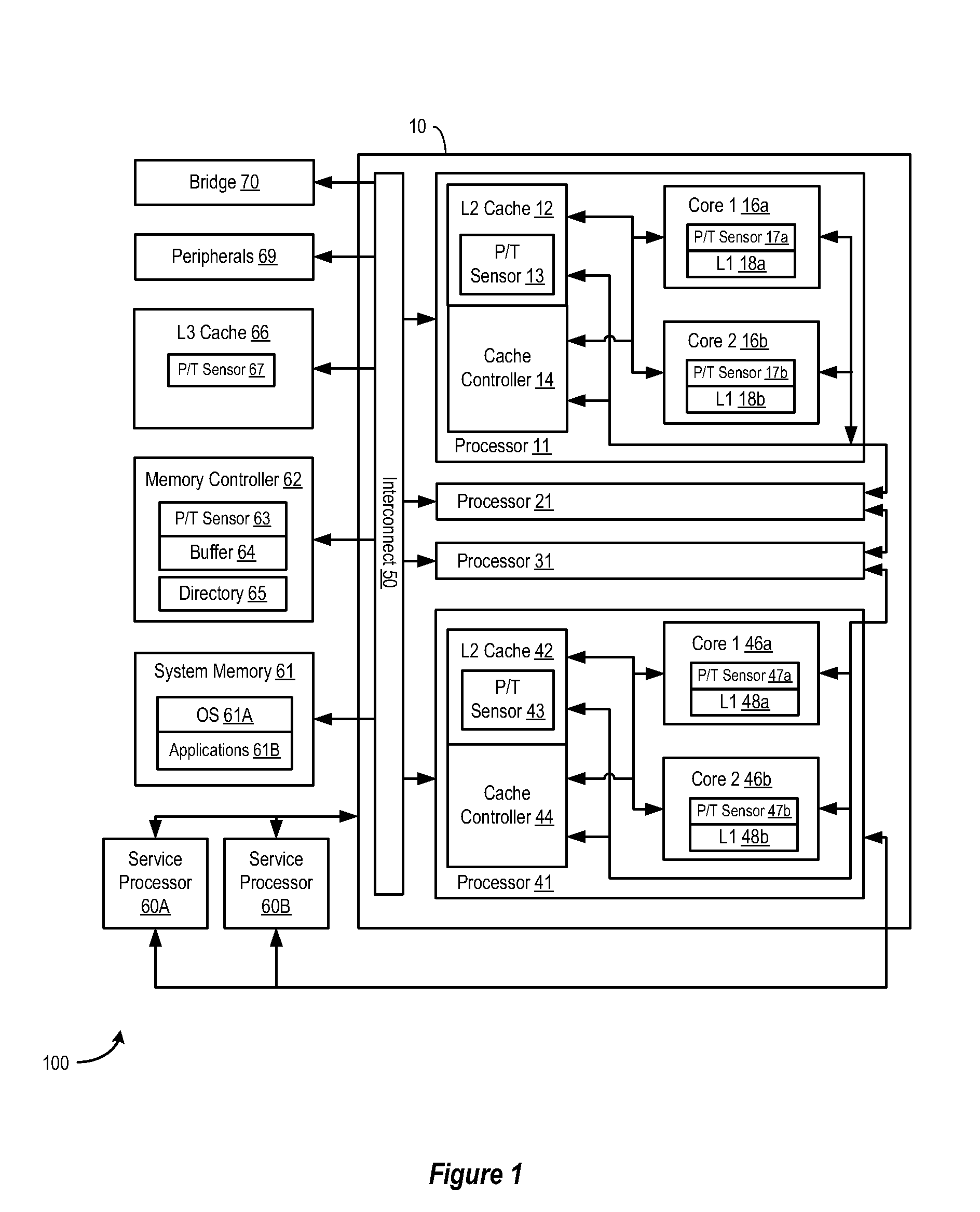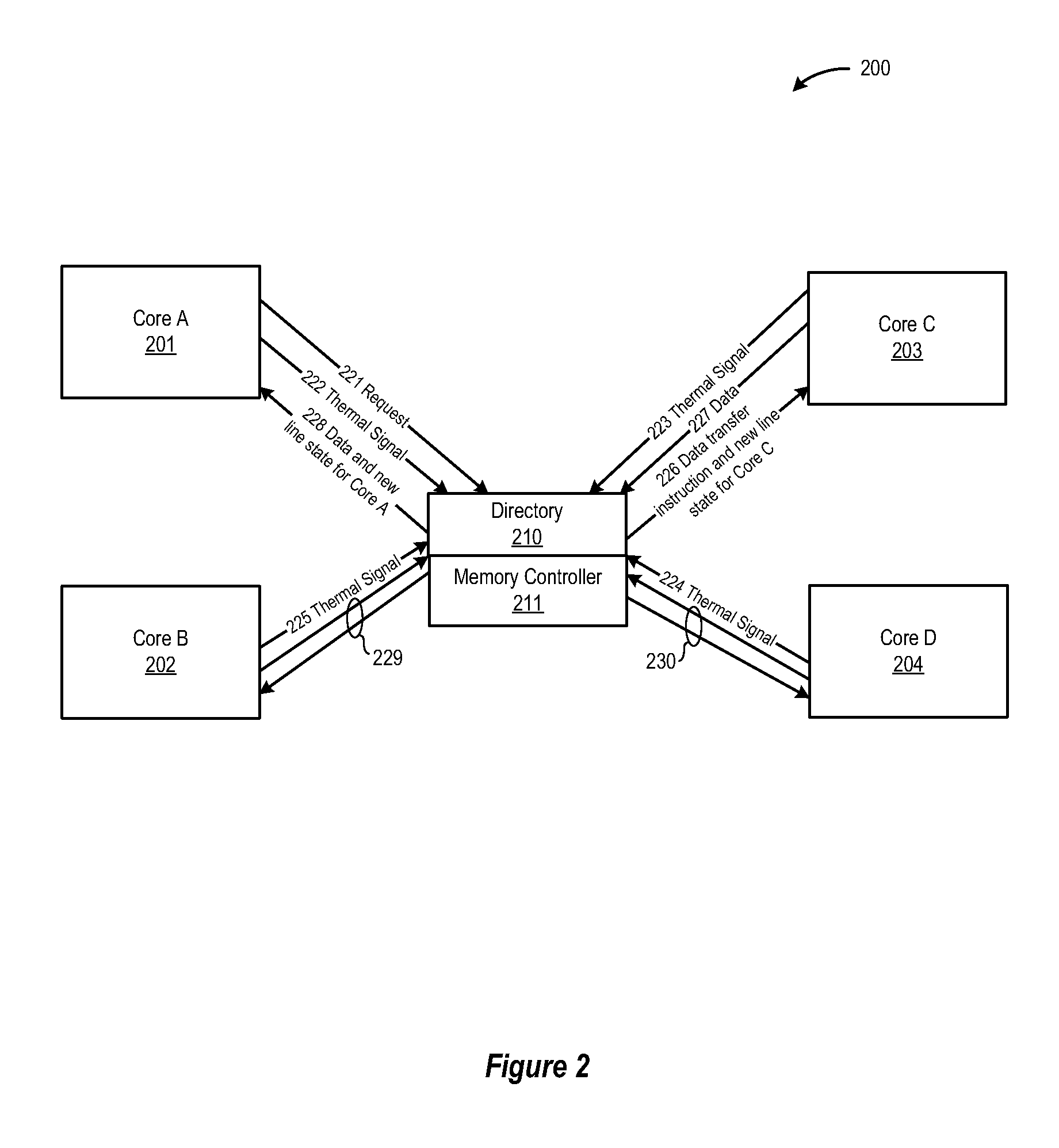Power-aware line intervention for a multiprocessor directory-based coherency protocol
a multiprocessor directory and coherency protocol technology, applied in the field of data processing systems, can solve the problems of increasing power dissipation (and hence core temperature), further limitations and disadvantages of conventional cache sourcing solutions, and undue limit on processing capability
- Summary
- Abstract
- Description
- Claims
- Application Information
AI Technical Summary
Benefits of technology
Problems solved by technology
Method used
Image
Examples
Embodiment Construction
[0014]A directory-based coherency protocol method, system and program are disclosed for coherently sourcing cache lines to a requesting core from a plurality of sources that each share the requested cache line on the basis of temperature and / or power signals sensed at each source so that only the source with an acceptable power dissipation or temperature is signaled to provide the requested line. To sense the temperature or power dissipation at each core of a multi-core chip, a diode is placed at each core on the chip as a temperature sensor. Where the diode output voltage will vary from 0.5-1.0V for a typical temperature range of 20 to 100 C, the output voltage is monitored and can be stored in a register for use by a control heuristic to select the source core from the cores having a temperature below a predetermined threshold. The disclosed techniques can be used in connection with a directory-based coherency protocol to source cache lines on a multiprocessor chip. In a directory...
PUM
 Login to View More
Login to View More Abstract
Description
Claims
Application Information
 Login to View More
Login to View More - R&D
- Intellectual Property
- Life Sciences
- Materials
- Tech Scout
- Unparalleled Data Quality
- Higher Quality Content
- 60% Fewer Hallucinations
Browse by: Latest US Patents, China's latest patents, Technical Efficacy Thesaurus, Application Domain, Technology Topic, Popular Technical Reports.
© 2025 PatSnap. All rights reserved.Legal|Privacy policy|Modern Slavery Act Transparency Statement|Sitemap|About US| Contact US: help@patsnap.com



